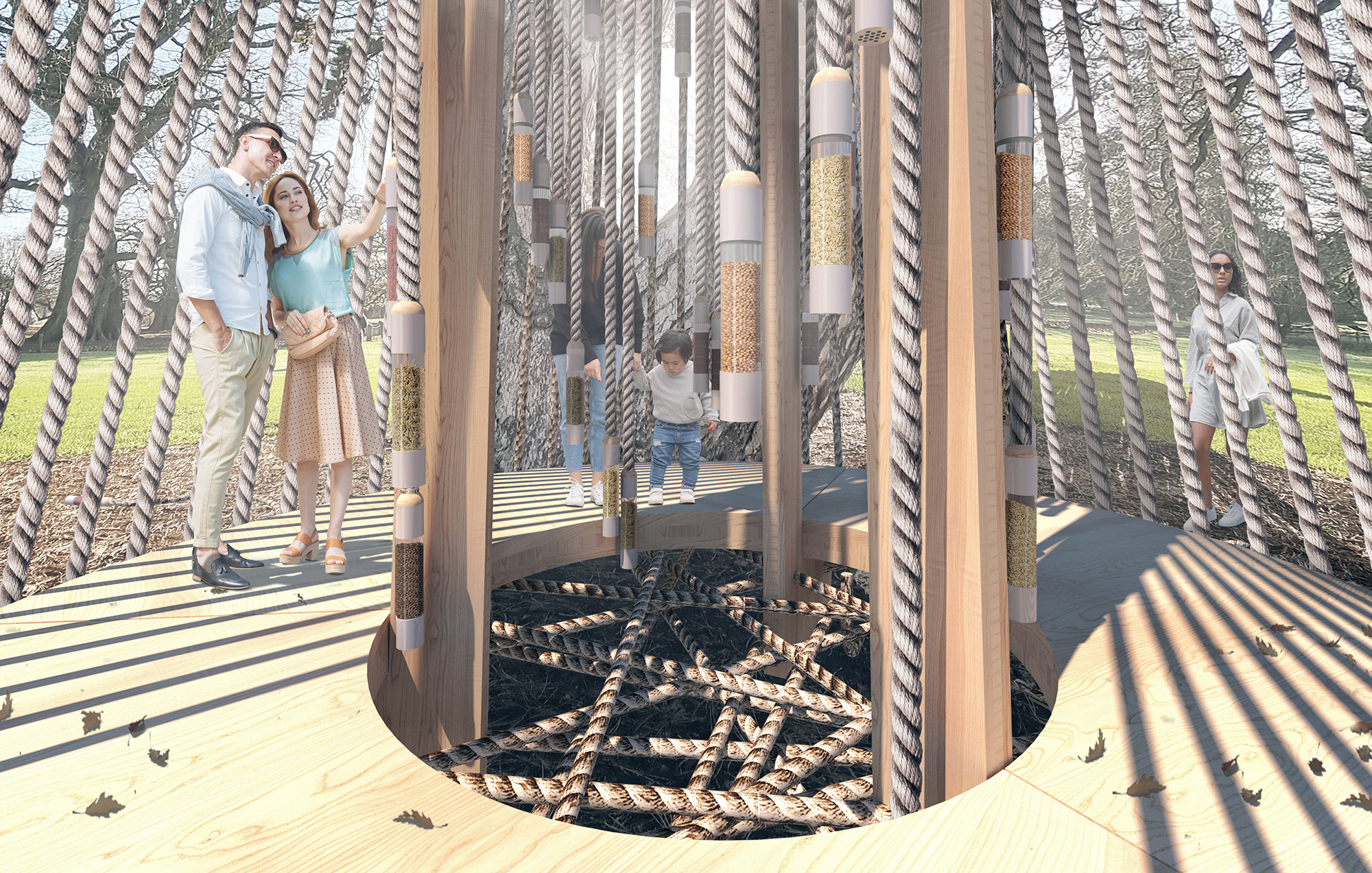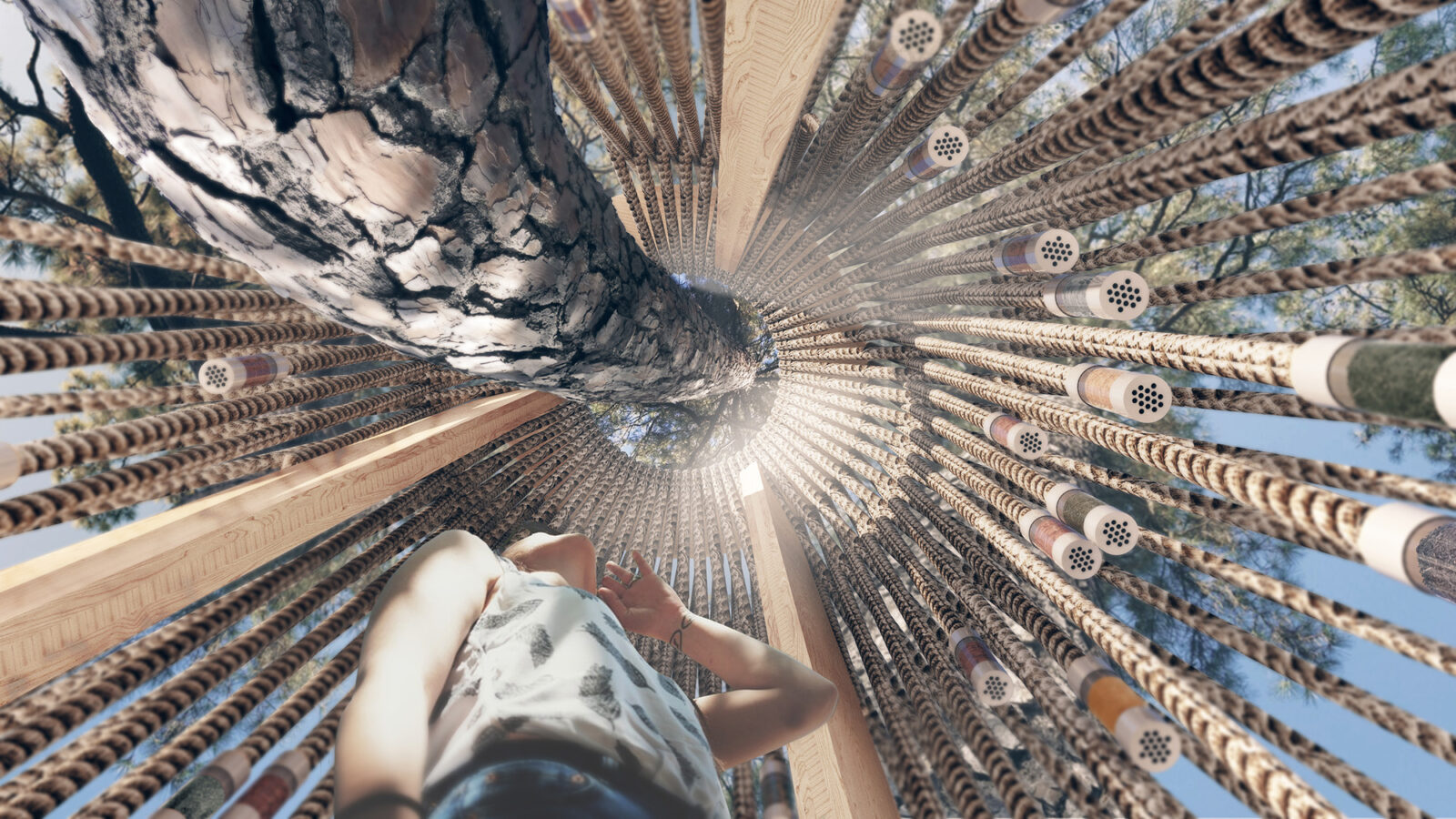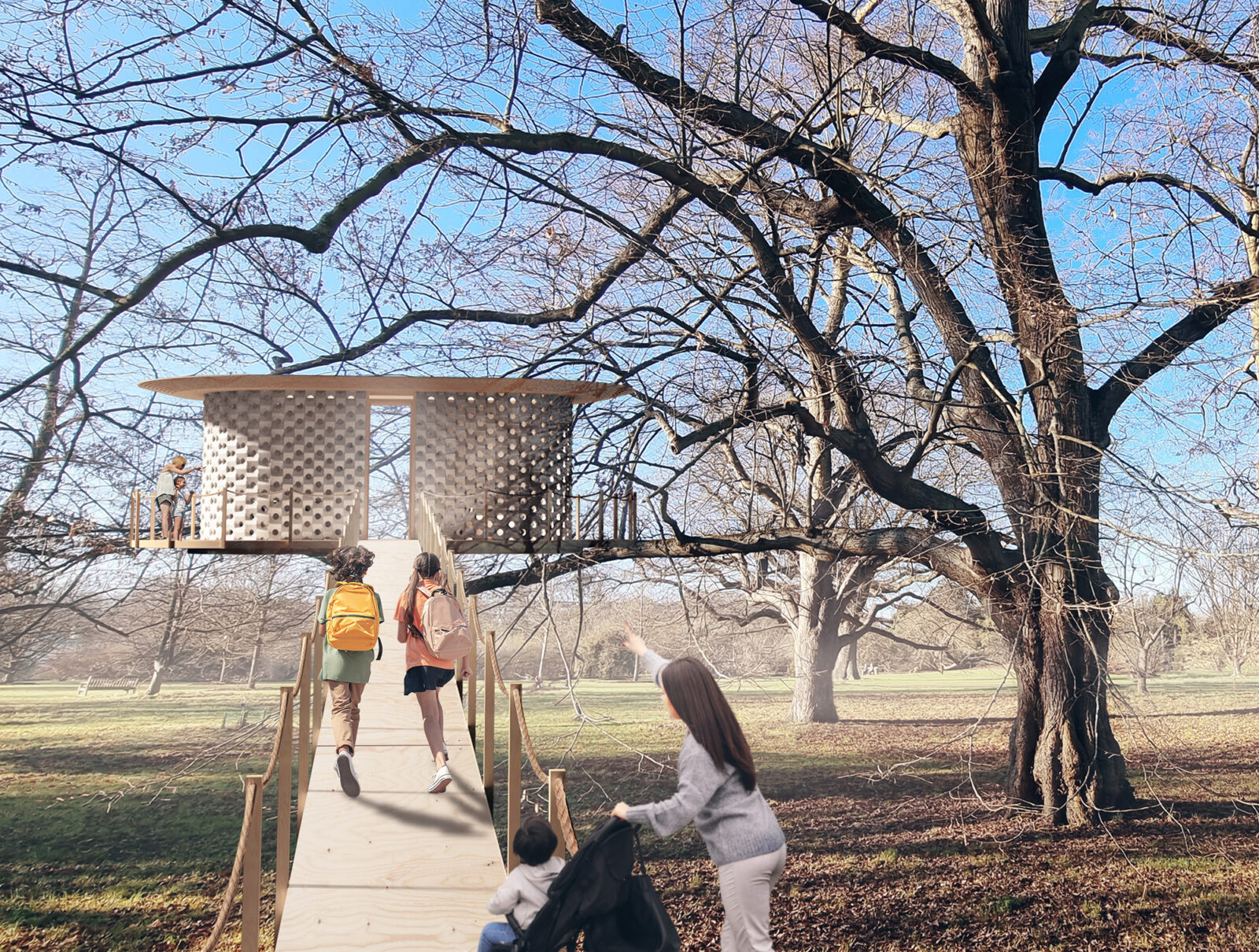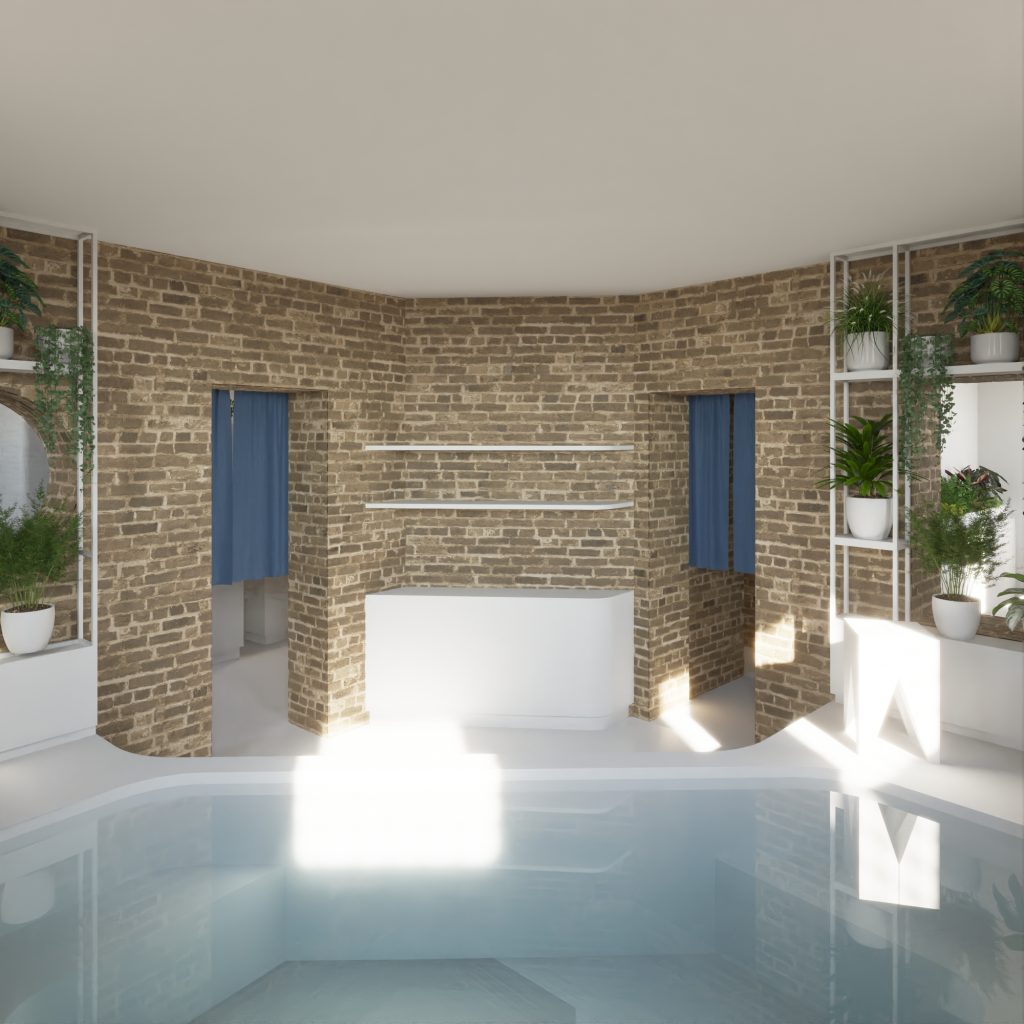The Ropehouse Tower tree house concept wraps around a major branch of the black pine, and is accessed by a tapered, gently-sloping ramp, after which visitors circulate on a wide, raised CLT ring. Individual hemp ropes begin in a central trampoline-like mesh, extend outwards in two directions to form the external walls of the tower, wrap over the skylight ring, then dangle downwards terminating in pods and vials of botanical interest, while some cords ‘forage’ onto and along the grass. These cords are hyphae to the tower’s mycelium – mimicking how fungal micro-threads grow, forage and coordinate into intricate, efficient, beautiful, and ever-changing macro-structures in a symbiotic relationship with their host tree.






